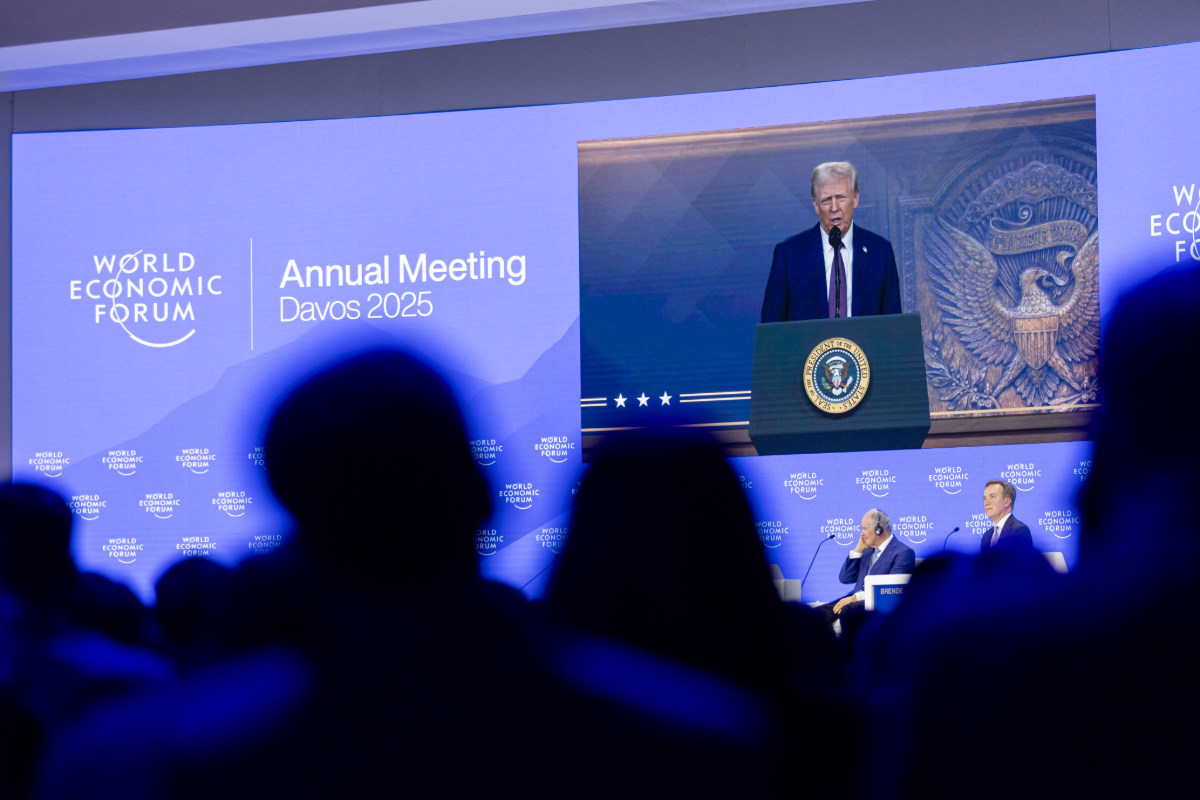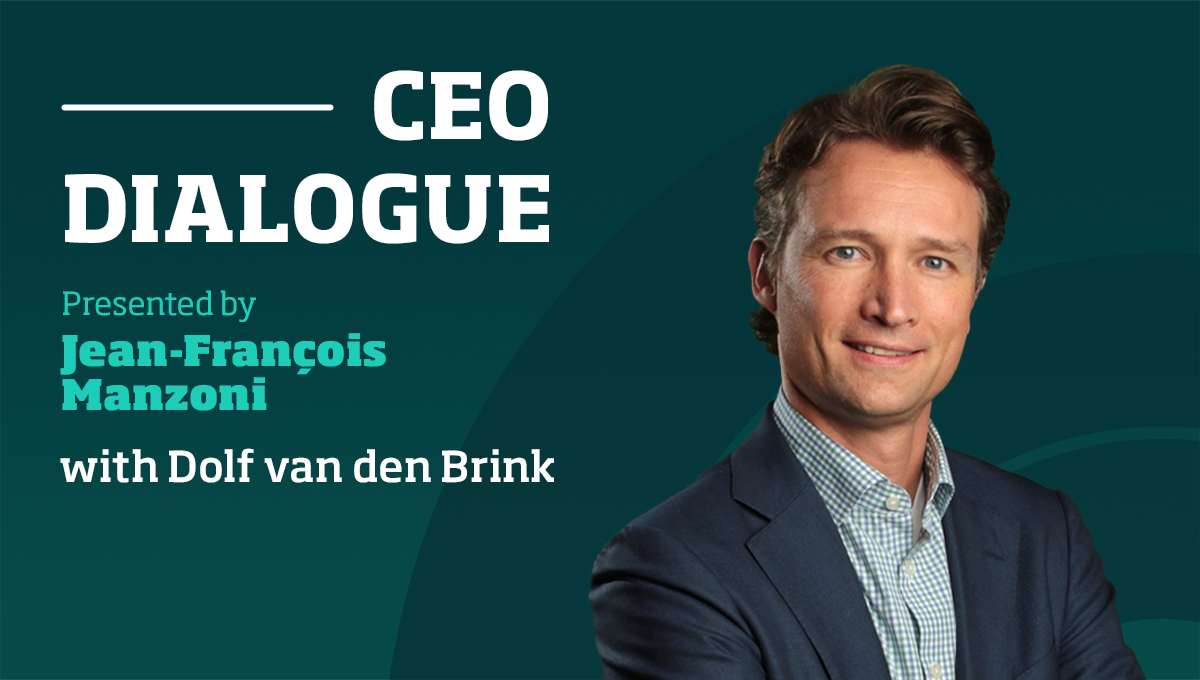
This is how we can close the workplace gender gap
The world is unbalanced. Regardless of the reforms, quotas and protests or the record number of women running for office or breaking through glass ceilings, we still live in a male-centric world.
This is especially true in the industries that will be most influential in the digital era, such as research and development and economics.
The IMD World Competitiveness Center has found that against almost every global benchmark, from politics to education, women are more often economically excluded than men. Women face institutionalized imbalances such as wage inequality, unpaid or poor-quality work, lack of access to education and discrimination based on societal and cultural gender role norms.
This disparity is especially evident when we examine global data surrounding pay gaps, and the rates of women holding executive positions and board seats.
The harsh reality of the global economy is that no one country in the world has closed its gender gap. Some countries do better than others, and we generally observe that the more competitive economies are also the ones exhibiting lower levels of gender inequality.
The World Economic Forum’s Global Gender Gap Report 2020 ranks Iceland in the top spot. The Nordic country has closed over 85 percent of its gender gap, followed by Norway (83.5 percent), Sweden and Finland (82.2 percent). Switzerland sits slightly above the average, having reduced 75% of its gender gap, which is in line with countries like South Africa and Cuba, but higher than the Netherlands and the United States. Worldwide, only 68 percent of the gender gap has been closed.
If we turn these percentages into an equivalent of a credit rating, 68 percent would receive a C+, which means we still have a long way to go before achieving the United Nations’ Sustainable Development Goal number 5 (achieve gender equality and empower all women and girls) by 2030.
There is just over a decade until the UN’s deadline, yet the Gender Gap Report prediction is that at the rate we are going it will take 108 years to achieve overall gender parity and 202 years to reach full equity in the global workforce. In a world where female leaders sit at the helm of multinational corporations and lead large economies, the overall reality entering 2020 is of a global economy that still discounts, misuses, and underpays half of the world’s potential talent.
With regards to women holding senior executive positions, the landscape is not much better. While most economies improved between 2008 and 2015, there is still much work to be done. Our data indicates that women currently hold a mere 34 percent of managerial positions, and this number drops significantly to only 7 percent in Egypt, Saudi Arabia, Yemen, and Pakistan. In Switzerland, meanwhile, only 32 percent of managerial positions are held by women, a number that has barely moved in the last decade.
The lack of women in managerial positions – positions which offer higher salaries – plays a significant role in the wage gap between men and women. What can countries do to reverse this trend?
There are some encouraging signs from around the world. In Iceland for example, the law stipulates that companies with twenty-five or more employees provide evidence that men and women are receiving equal pay for equal work.
Yet regulation cannot solve all our problems. What will help to close the wage gap worldwide is more women working in what have been traditionally male-dominated professions, and vice-versa. This means focusing on technology fields, research, and design.
Part of the remedy is encouraging women to follow STEM (science, technology, engineering and mathematics) educational pathways, as well as to consider careers in research and development.
As industries become more focused on technology, financial participation and wages become increasingly linked to jobs in STEM disciplines. It is becoming increasingly important that women not only take entry-level jobs but see that they can rise to the top and potentially lead companies focused on research and development.
This also means more female directors in board positions than we see at present. Between 2008 and 2016 the number of women participating on corporate boards increased around the world except in Hungary, Indonesia, and the Philippines. But there is still a long way to go – the percentage of female board members in the ten most competitive economies currently stands at 21 percent, but the numbers are slowly moving in the right direction. This may be due to quota laws – both voluntary and sanctioned – that have been instituted in many European countries.
Whatever the reason, whether mandated or voluntary, we are seeing a stronger representation of women in board seats, even while they are still underrepresented in upper managerial and middle management positions.
Informal gender quotas had been in place in Norway since the 1980s. The political process to move towards more formalized gender quotas began in 1999 and culminated with a 2003 board quota amendment added to Norway’s Companies Act. The goal of the amendment was to increase women’s representation in corporate positions of power and decrease gender disparity in terms of earnings. In 2006, Norway was the first country to pass a gender quota law requiring all publicly listed companies to have a minimum 40/60 gender balance on their boards, which was fully enforced by 2008.
The problem that the Norway example study highlights, and the problem with board quotas in general, is that female representation at the top does not translate to female representation in the lower rungs of organizations. Instead of starting from the bottom and working up, board quotas are trying to problem-solve at the top and hoping it will cascade downwards. Companies need to start from the bottom and change hiring and promotion policies at entry and management levels to ensure real progress is being made.
The root of the problem, it seems, is corporate culture in general, and that is where we need to focus our attention. A re-evaluation is required that addresses hiring practices, mentorship, communications, and advancement potential. It is not enough to merely attract diverse candidates, because if the company culture does not support them, they won’t stick around.
Nor is tokenism in hiring the answer if real change is to be implemented. A focus on creating genuinely inclusive workplace cultures is imperative where women are not only hired, but able to hold decision-making positions and – ultimately – to lead companies.
Research Information & Knowledge Hub for additional information on IMD publications

Why is Hermès outpacing Nike, and what's driving the success of Roche and NVIDIA? Their cautious and steady approach is making them the best-equipped to face an uncertain 2025.

Business leaders at this year's World Economic Forum sought to block out the political noise and focus on what's happening in the real economy.

Many new businesses have emerged in recent years with few employees, no roots in the community, and heavily reliant on Big Tech for survival. How does this square with the demands for responsible leadership?
With stagnant import volumes since 2021, and import prices at levels below those suggested by fundamentals, foreign exporters face an uphill battle to convert access to the Chinese market into revenues. Notably, the volume stagnation predates the ...

Early in his career, Dolf van den Brink did everything he could to project an image of authority – including wearing spectacles he didn’t need. It wasn’t until he learned to be comfortable in his skin that he began to excel as a leader, he tells ...

Early in his career, Dolf van den Brink, CEO of Heineken since 2020, did everything he could to project an image of authority – including wearing spectacles he didn't need. It wasn't until he learned to be comfortable in his skin that he began to ...
It has become conventional wisdom to view Europe as an economic powerhouse past its prime, overshadowed by the steady advance of the US and meteoric rise of China. Critics cite Europe’s shrinking share of global GDP, excessive regulation, and slug...
Now in its eighth year, the 2024 IMD World Digital Competitiveness Ranking measures the capacity and readiness of 67 economies to adopt and explore digital technologies as a key driver for economic transformation in business, government, and wider...

Michael Wade and Tomoko Yokoi explain how IMD ranked the world's leading companies on AI adoption and use – and reveal which topped the list.

A balanced assessment of the past eight years is that, in terms of trade policy, America has turned protectionist, implementing significant measures to restrict domestic market access to foreign (non-US) imports.
Research Information & Knowledge Hub for additional information on IMD publications
in I by IMD 24 January 2025
Research Information & Knowledge Hub for additional information on IMD publications
in I by IMD 14 January 2025
Research Information & Knowledge Hub for additional information on IMD publications
Research Information & Knowledge Hub for additional information on IMD publications
Research Information & Knowledge Hub for additional information on IMD publications
Research Information & Knowledge Hub for additional information on IMD publications
Research Information & Knowledge Hub for additional information on IMD publications
IMD World Competitiveness Center Report, 14 November 2024, 8th edition
Research Information & Knowledge Hub for additional information on IMD publications
Research Information & Knowledge Hub for additional information on IMD publications
Research Information & Knowledge Hub for additional information on IMD publications

